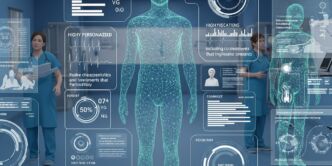A standout 2021 supports in silico trials
2021 was a standout year for drug development. The US FDA approved a record number of new drugs, on top of passing Emergency Use Authorisations for Covid-19 vaccines and therapeutics. About 70% of 2021’s new drug approvals were accelerated in one way or another, providing rapid patient access to therapies that address unmet needs.
The 2021 approvals roster was not without controversy – remember Aduhelm ? But few would argue with regulators’ increased flexibility in the face of a highly contagious, rapidly mutating virus. Authorities were compelled to look beyond gold-standard double-blinded randomized controlled trials to alternative data sources and study designs – an adaptation that began pre-pandemic, but has become more pronounced.
Enter in silico trials
Systems and minds opened up , adjusting to a world beyond conventional trials. That world should, and increasingly does, include in silico trials .
Clinical trials are the most expensive, risky and time-consuming aspect of drug development. Many were sorely disrupted during the pandemic. Some went virtual, in full or in part, with patients monitored remotely at home.
But how about taking ‘virtual’ to the logical extreme? Fully virtual – in silico – trials provide a much bigger opportunity to accelerate and improve clinical studies. They don’t replace in-person trials. Instead, they make conventional trials as targeted, efficient and convenient as possible by offering endless opportunities to simulate outcomes and tweak trial design before incorporating a single human patient.
How do in silico trials work? They require comprehensive models of disease and treatment mechanisms, and a carefully characterized population of “virtual” patients – data capturing plausible individual biological measurements of interest.
Making the case for in silico
In our ebook, “Making the case for in silico trials” , we describe how such models are built and tested, and how they are already impacting R&D. We put today’s computer-based models in context: as the latest chapter in a long history of models that have helped elucidate medical knowledge, as well as represent such knowledge in a testable fashion.
The ebook outlines the many advantages of in silico trials – from unlimited population sizes and variables, to in-person controls and fully in silico trial control arms.
The forces driving more efficient R&D are multiple, and irresistible: aging populations, chronic and under-served diseases, pandemic risk, and a mental health crisis. Affordable solutions are needed fast, as regulators made clear with their prolific 2021. In silico models can help.

